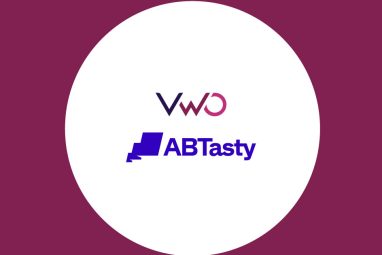Saudi Banks Fail To Meet Digital Experience Expectations Of Customers
Complaints around digital experience occur when consumers transact more, like during month-end. A new report finds Saudi banks fail to meet customer expectations of digital experience. Saudi Arabia’s digital services market is considered the largest in the MENA region, with annual digital transformation spending reaching SR12 billion ($3.19 billion) annually. For Saudi banking customers, however, […]
Topics
What to Read Next
- VWO, AB Tasty Partner to Build the Future of Digital Experience Optimisation
- Optimove Unveils AI Content Decisioning, an OptiGenie Agent
- Higgsfield Raises $130M, Valued at $1.3B to Fuel the Future of AI Video Creation
- Automation Anywhere Advances AI-Native Agentic Solutions with OpenAI
- Acosta Group Announces Strategic Alliance with CommerceIQ

Complaints around digital experience occur when consumers transact more, like during month-end.
A new report finds Saudi banks fail to meet customer expectations of digital experience.
Saudi Arabia’s digital services market is considered the largest in the MENA region, with annual digital transformation spending reaching SR12 billion ($3.19 billion) annually. For Saudi banking customers, however, the digital experience still leaves much to be desired.
The 2022 Saudi Banking Sentiment Index, conducted by leading social data business DataEQ, revealed that digital experience is one of the most negatively- spoken-about topics among Saudi banking customers on social media. Complaints around digital experience mainly occur in periods when consumers are likely to transact more, like month-end.
Presenting the Index results in Riyadh at the recent Future Banks Summit, DataEQ’s Chief Executive Officer, Nic Ray, said that system downtime and a lack of communication frustrate consumers during these high-demand periods. “When drilling down into these negative posts, we found that frustration with the digital banking experience is often because of system outages or app downtime, which typically leaves consumers unable to complete critical banking transactions.”
“This may suggest that there are constraints related to transaction capacity across some of the banks,” Ray said Social sentiment towards Saudi banks is negative overall
The Saudi Banking Sentiment Index tracked nearly 700,000 Twitter posts about five central retail banks.
- Each tweet received a positive, neutral, or negative sentiment rating. These ratings were then used to calculate each bank’s Net Sentiment.
- Overall, the Saudi banking industry experienced more negative conversations (16.6 per cent) than positive (4.5 per cent), resulting in a negative overall Net Sentiment score of -12.1 per cent. While all five banks in the Index had negative scores, Alinma Bank achieved the highest Net Sentiment score of -2.3 per cent – almost ten percentage points higher than the industry aggregate.
- DataEQ tracked 697,849 Twitter posts about Bank Albilad, Al Rajhi Bank, Alinma Bank, Riyad Bank and Saudi National Bank from 1 May to 31 July 2022.
2 Net Sentiment is one of DataEQ’s key performance indicators and is calculated by scoring each data point as positive (1), neutral (0), or negative (-1). A score is then calculated by subtracting the total negative conversation from the total positive conversation (Net Sentiment = positive conversation – negative conversation). This score is then divided by the total number of posts (positive, neutral, and negative) during that period. It results in a single score with which to measure sentiment.
Social media response rates leave room for improvement.
According to the social customer service results, Saudi banks publicly responded to 73 per cent of priority three tweets on average, leaving more than a quarter unanswered. While the top-performing bank, Alinma Bank, achieved an above-average response rate of 87.2 per cent, the worst-performing bank only responded to around half (54.8 per cent) of their priority conversation.
While all five banks typically responded to priority tweets within two hours, response time varied across the industry, with three banks responding in under an hour. The other two banks were considerably slower, which means that even when customers did receive a response, it was not immediate – something which has come to be expected in social customer service.
Digital transformation presents an opportunity for Saudi’s banking sector. Saudi Arabia has attracted international attention for its Vision 2030, which is driving socio-economic transformation at an unprecedented pace.
“The digital transformation taking place on a broader scale presents an opportunity for Saudi banks to utilise the available insights on social sentiment and consumption habits to tailor their digital strategy. Using real-time customer feedback to understand friction points in existing processes will enable banks to ensure their future digital experience meets the needs of their customers,” Ray concluded.









































































































